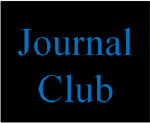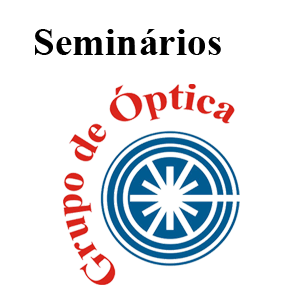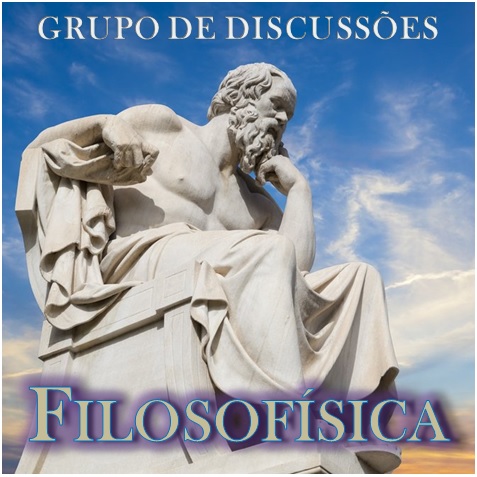Café com física: “Estudando rotações moleculares em sólidos orgânicos utilizando RMN”
 Dinâmica molecular exerce um papel fundamental na função de muitos materiais orgânicos, em particular na chamada matéria mole. É bem conhecido que as propriedades de polímeros de construção, tais como resistência a cisalhamento, deformação e tensão, estão intimamente relacionados com a dinâmica de segmentos específicos das cadeias poliméricas. Isto também é verdade para materiais mais avançados, tais como copolímeros ou híbridos nano-estruturados, onde a combinação inteligente de componentes com propriedades dinâmicas distintas levam a sistemas compostos com comportamentos mecânicos específicos. No entanto, não só as propriedades mecânicas são sensivelmente afetadas pela dinâmica molecular. Por exemplo, em polímeros semicondutores, o transporte de carga e propriedades de emissão de luz são sensíveis a mudanças na dinâmica da cadeia polimérica, e em sistemas tipo “guest-host” usados como sensores, mudanças na conformação molecular estão intrinsecamente associada à reorientação das moléculas hóspedes. A importância da dinâmica molecular é ainda mais reconhecida em sólidos biológicos, estando intimamente relacionada com a suas funções. Neste sentido, a RMN provê técnicas poderosas para elucidar detalhes de rotações moleculares. Utilizando RMN é possível estudar processos dinâmicos que ocorrem em ampla faixa de frequências, indo desde centenas de MHz (Dinâmica rápida) a alguns Hz (Dinâmica lenta), com alto grau de detalhamento. Neste seminário, iremos explorar a ideia por traz da maioria das técnicas utilizadas para estudar movimentos moleculares em sólidos orgânicos e matéria mole, ilustrando como esses princípios podem ser explorados em diferentes experimentos. Em particular, ilustraremos desde técnicas de espectroscopia de RMN em alto campo magnético, até novos desenvolvimentos em RMN no domínio do tempo, onde informações similares podem ser obtidas em equipamentos de RMN de baixo campo magnético de bancada.
Dinâmica molecular exerce um papel fundamental na função de muitos materiais orgânicos, em particular na chamada matéria mole. É bem conhecido que as propriedades de polímeros de construção, tais como resistência a cisalhamento, deformação e tensão, estão intimamente relacionados com a dinâmica de segmentos específicos das cadeias poliméricas. Isto também é verdade para materiais mais avançados, tais como copolímeros ou híbridos nano-estruturados, onde a combinação inteligente de componentes com propriedades dinâmicas distintas levam a sistemas compostos com comportamentos mecânicos específicos. No entanto, não só as propriedades mecânicas são sensivelmente afetadas pela dinâmica molecular. Por exemplo, em polímeros semicondutores, o transporte de carga e propriedades de emissão de luz são sensíveis a mudanças na dinâmica da cadeia polimérica, e em sistemas tipo “guest-host” usados como sensores, mudanças na conformação molecular estão intrinsecamente associada à reorientação das moléculas hóspedes. A importância da dinâmica molecular é ainda mais reconhecida em sólidos biológicos, estando intimamente relacionada com a suas funções. Neste sentido, a RMN provê técnicas poderosas para elucidar detalhes de rotações moleculares. Utilizando RMN é possível estudar processos dinâmicos que ocorrem em ampla faixa de frequências, indo desde centenas de MHz (Dinâmica rápida) a alguns Hz (Dinâmica lenta), com alto grau de detalhamento. Neste seminário, iremos explorar a ideia por traz da maioria das técnicas utilizadas para estudar movimentos moleculares em sólidos orgânicos e matéria mole, ilustrando como esses princípios podem ser explorados em diferentes experimentos. Em particular, ilustraremos desde técnicas de espectroscopia de RMN em alto campo magnético, até novos desenvolvimentos em RMN no domínio do tempo, onde informações similares podem ser obtidas em equipamentos de RMN de baixo campo magnético de bancada.




 O docente discutirá o processo movido pela Igreja Católica contra Galileu Galilei no século XVII. Além de descrever a situação da Ciência e os avanços que motivaram a ação eclesiástica, ele fará crítica do processo propriamente dito. Em particular, Rogério discorrerá sobre a influência das personalidades dos participantes sobre o andamento e resultado.
O docente discutirá o processo movido pela Igreja Católica contra Galileu Galilei no século XVII. Além de descrever a situação da Ciência e os avanços que motivaram a ação eclesiástica, ele fará crítica do processo propriamente dito. Em particular, Rogério discorrerá sobre a influência das personalidades dos participantes sobre o andamento e resultado. Ao longo dos últimos 20 anos, o processamento da informação quântica (PIQ) se estabeleceu como uma nova e excitante área da Física. Muito mais do que uma promessa de novas tecnologias para computação e comunicação, estudos do PIQ levaram a uma enormidade de novos conceitos e aprofundaram a nossa compreensão sobre a própria Mecânica Quântica. O paradigma de processador utilizado em todo este desenvolvimento é o sistema mais simples possível: um computador quântico de apenas dois q-bits. Neste colóquio apresentarei a versão deste computador na técnica da Ressonância Magnética Nuclear (RMN), e uma parte da incrível variedade de estudos realizados em tal sistema.
Ao longo dos últimos 20 anos, o processamento da informação quântica (PIQ) se estabeleceu como uma nova e excitante área da Física. Muito mais do que uma promessa de novas tecnologias para computação e comunicação, estudos do PIQ levaram a uma enormidade de novos conceitos e aprofundaram a nossa compreensão sobre a própria Mecânica Quântica. O paradigma de processador utilizado em todo este desenvolvimento é o sistema mais simples possível: um computador quântico de apenas dois q-bits. Neste colóquio apresentarei a versão deste computador na técnica da Ressonância Magnética Nuclear (RMN), e uma parte da incrível variedade de estudos realizados em tal sistema. Neste seminário serão discutidos os métodos atuais de diagnóstico de câncer bucal. Em especial, alguns aspectos relacionados ao uso clínico da fluorescência no diagnóstico de lesões bucais.
Neste seminário serão discutidos os métodos atuais de diagnóstico de câncer bucal. Em especial, alguns aspectos relacionados ao uso clínico da fluorescência no diagnóstico de lesões bucais. Tendo como base os três aspectos de John M. Ziman para caracterizar ciência, os debates promoverão discussões entre membros do Filosofísica, tendo outro membro como mediador, sobre cada um desses aspectos, para conclui-los no último seminário. O primeiro trata a ciência de uma perspectiva psicológica, tomada como uma atividade realizada por indivíduos com motivações pessoais e criativas.
Tendo como base os três aspectos de John M. Ziman para caracterizar ciência, os debates promoverão discussões entre membros do Filosofísica, tendo outro membro como mediador, sobre cada um desses aspectos, para conclui-los no último seminário. O primeiro trata a ciência de uma perspectiva psicológica, tomada como uma atividade realizada por indivíduos com motivações pessoais e criativas. In this talk the current knowledge of the electrical degradation during fatigue of polymer-based light-emitting diodes is reviewed focusing especially on derivatives of poly(p-phenylenevinylene) (PPV). Studied are observed phenomena, mechanisms and material properties changing during continuous device operation at constant current. This talk focuses on the effect of chemically induced defects introduced during synthesis and elaborates their influence on transport properties such as charge carrier mobility and device lifetime. Highlighted will be the influence of a halogen defect that leads to a degradation of the electrodes and therewith is mainly responsible for device degradation. In addition, an optical effect will be described in which the absorption of the emitted electroluminescence by the semiconductor itself is one of the reasons for device degradation. Finally, the influence of the triplet density is investigated indicating that local deposition of energy is also an important factor to contribute to degradation. All experiments were accompanied by theoretical modeling shining light on how the change of injection barriers, charge carrier mobility or trap density influence the current-voltage characteristics of the diodes. Especially interesting is thereby the consideration of image charges for low carrier densities through the Schottky effect, which allows for an enhanced barrier lowering, and a more realistic description of the device performance.
In this talk the current knowledge of the electrical degradation during fatigue of polymer-based light-emitting diodes is reviewed focusing especially on derivatives of poly(p-phenylenevinylene) (PPV). Studied are observed phenomena, mechanisms and material properties changing during continuous device operation at constant current. This talk focuses on the effect of chemically induced defects introduced during synthesis and elaborates their influence on transport properties such as charge carrier mobility and device lifetime. Highlighted will be the influence of a halogen defect that leads to a degradation of the electrodes and therewith is mainly responsible for device degradation. In addition, an optical effect will be described in which the absorption of the emitted electroluminescence by the semiconductor itself is one of the reasons for device degradation. Finally, the influence of the triplet density is investigated indicating that local deposition of energy is also an important factor to contribute to degradation. All experiments were accompanied by theoretical modeling shining light on how the change of injection barriers, charge carrier mobility or trap density influence the current-voltage characteristics of the diodes. Especially interesting is thereby the consideration of image charges for low carrier densities through the Schottky effect, which allows for an enhanced barrier lowering, and a more realistic description of the device performance.